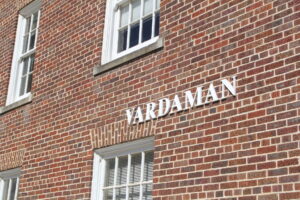By Gene Crunk
Hottytoddy.com Intern
ehcrunk@go.olemiss.edu

Within the past several years student organizers have continuously dedicated their activism to combating white supremacy on the University of Mississippi’s campus.
Students Against Social Injustice (SASI) hosted a discussion Wednesday night in an effort to continue to combat the “glorification of white supremacy” at the university.
SASI is the local chapter of the national student-led organization United Students Against Sweatshops (USAS). According to the group’s mission statement, they are committed to providing a safe, welcoming environment for marginalized persons on campus.
Wednesday evening’s event renewed the discussion on how to move past the university’s history of racism. The main topic of the night’s event was the removal of references to figures who supported racism and white supremacy from university buildings.
In a flyer promoting the event, SASI referenced several famous campus namesakes on buildings and programs who are historically known for their racist views and actions:
One such example given was James K. Vardaman, the namesake of Vardaman Hall, who was known as “The Great White Chief” because he advocated for white supremacy. Vardaman also strongly advocated for lynching African Americans and was once quoted saying, “If it is necessary, every negro in the state will be lynched” during his campaign for governor of Mississippi in the early 1900s.

The University pledged to remove Vardaman’s name from the building in 2017. However, his name remains today.
Hottytoddy.com reached out to University officials regarding the progress of any active effort to remove the name; however, requests for information remained unanswered as of Thursday afternoon.
Other examples cited by SASI are the namesakes of Lamar and Ventress Hall. According to the flyer, L.Q.C. Lamar and James Alexander Ventress owned a combined 280 slaves prior to the Civil War. In both of these cases, there are not any active efforts to remove their names from University buildings.
Actions Leading to Name Removal
The removal of names from campus is not a new topic of discussion. In recent years, two prominent Oxford figures have had their names removed from buildings.
Dickie Scruggs, a prominent tobacco lawyer, asked the university in 2008 to remove his name from the music building after pleading guilty to conspiring to bribe a state judge.
Scruggs was sentenced to seven years in prison in 2009 and was released in 2014. Since his release, he has formed the nonprofit “2nd Chance Mississippi” that works with highschool dropouts to help them obtain their GEDs.
Last year, Ed Meek, who was at the time the namesake of the School of Journalism & New Media, was called racist by many in the LOU community after making a Facebook post that included images of two black females on the Oxford Square late at night. Meek’s name was later removed from the School.
The building bore his name after he donated a $5.3 million endowment in 2009; however, he recently redirected that endowment from the University of Mississippi to the CREATE Foundation based in Tupelo.
CREATE’s present-day operations work as “the region’s premier philanthropic resource regarding comprehensive charitable planning for individuals, nonprofits, communities, and businesses,” according to its website.
In July, three university students were photographed in front of the bullet-riddled Emmett Till marker while holding guns. Till was an African American teenager who was brutally lynched in 1955. The University condemned the photo, and the students were suspended from their fraternity.
Recently, there was the Ole Miss student who was photographed wearing blackface on social media. The student reportedly admitted his mistake and went through a “Restorative Justice Plan” administered by the University, who once again condemned a student’s racist photographs that brought negative national news attention to the school.
Though there are many controversial issues regarding white supremacy on the University of Mississippi’s campus, the bigger question remains: Do students really care about removing references to racist figures from campus?
Although many students are strong believers that change is needed, not all of them felt that way. Raegan Gourley, an Ole Miss freshman, does not agree with the idea of removing the names from University buildings.
“I feel like the names on the buildings aren’t blatantly racist,” Gourley said. “I don’t look at them and feel contempt.”
Gourley does believe that more directly-racist structures on campus, such as the Confederate statue, have no place at the university.
“When I look at the confederate statue on campus, that is a blatantly racist piece of history,” Gourley said.
Dreyquis Young, another Ole Miss freshman, believes that taking away more of the campus’s history will not solve the problems at hand.
“I believe people are trying to prove that we haven’t changed even though we already have considerably,” Young said.
Many of the university’s governing bodies have sided with SASI to demand changes from school leaders. For example, the Faculty Senate, Associated Student Body and Graduate Student Council all passed resolutions in agreement that the Confederate statue, located in the Lyceum-Circle, should be relocated to the Confederate Cemetary adjacent to the Tad Smith Coliseum.
Cam Calish, a student who is a member of SASI, said it’s time for the University to do away with building names honoring known racists.
“(Keeping the names on the buildings) is actively perpetuating violence in present day,” Calish said.

The disagreements between the two sides both have equally passionate supporters. However, SASI and its supporters believe that events like theirs will help gain attention from leaders of the university in hopes that they will pursue more changes to eliminate references to white supremacy on campus and from the student body.
SASI will host a second discussion on the subject from 5:30 to 7 p.m. on Thursday night (tonight) in the Bryant Hall Gallery.

